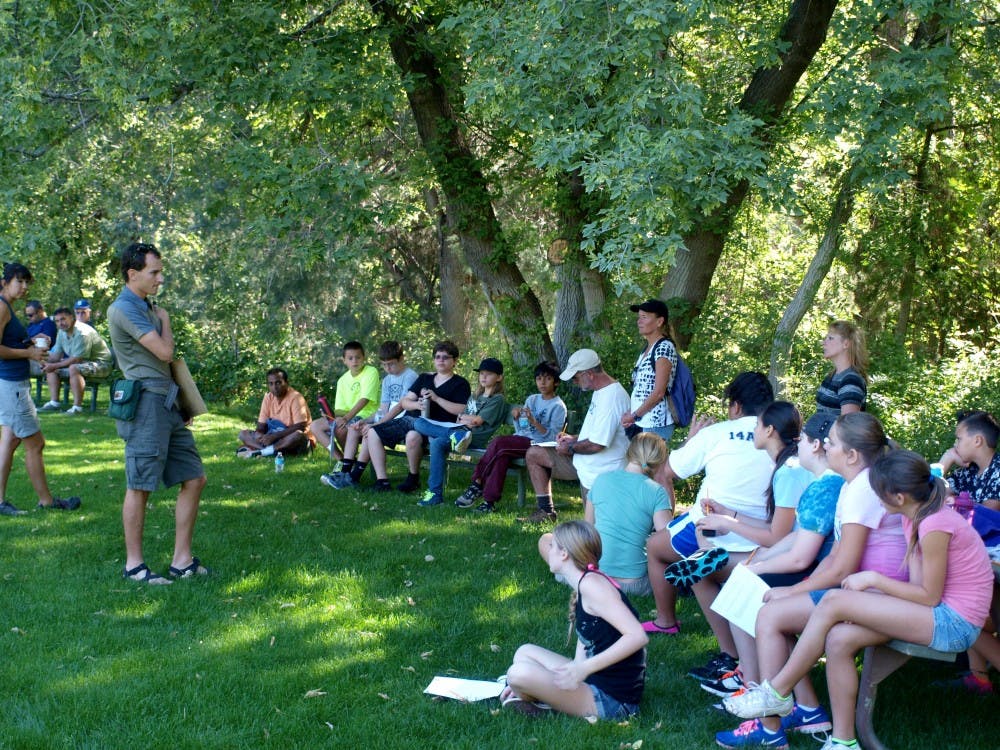 Photo courtesy of Tom Fraker.
Photo courtesy of Tom Fraker.Middle school students across Arizona will be able to receive hands-on learning experiences from ASU faculty and students during a three-day camp in Payson.
Retreat at Tontozona, formerly known as Camp Tontozona where the football team escapes during the heat of the summer to practice, is a STEM-centered outdoor enrichment camp designed to use ASU's academic resources and transfer knowledge to youth in the community.
Tonto Creek Camp, a nonprofit organization that aims to provide children the chance to explore the natural world, took over the management of the 36-acre campsite in 2011.
Tom Fraker, executive director of the organization, said when the camp was for sale by ASU, the group wanted to buy it for use for the community's children. The sale was not finalized, but Tonto Creek Camp became the land's manager.
Although the program began two years ago, it has only recently started to pick up pace as a curriculum that follows Arizona education standards has been developed, he said.
The nonprofit organization also raises money and covers 35 percent of student’s individual costs to make it more accessible. The trip is $80 per person and covers food, lodging and expenses.
“It is very affordable,” he said. "(Bringing in ASU students) plants seeds and triggers something with the kids that there are ways to get to college."
Two years ago, geological science graduate student Andy Darling was asked to go to Payson and teach sixth grade students about how canyons are made.
When Darling began working at the Retreat at Tontozona, one or two schools attended, but this year there are 22 different schools that are coming to the camp.
Darling said the first thing he does when he starts class is to take students on a virtual field trip using Google Earth. As he talks, the screen behind him zooms in to an aerial view of the building they are in, and then swoops off to the nearby Tonto Creek. The virtual trip continues by showing the students canyons all over Arizona.
After viewing canyons, Darling shows students a video of a flash flood that happened in Scottsdale. Then, he engages the students in a discussion and asks them if they know how canyons are formed.
“Some kids get really excited and come up with really interesting ideas,” he said.
One student thought that canyons were the path where dinosaurs liked to walk. The student was insistent that dinosaurs created the canyons, Darling said.
Darling takes students out for a hike as part of the program, and after crossing a river and wandering through some weeds, they overlook the Tonto Creek and a waterfall below.
“'Why is this canyon here?’ is the last question I ask while overlooking the waterfall,” Darling said.
During the class, Darling drops hints about the final question.
“Some classes are quicker than others, but usually someone will come up with it,” he said.
By the end of the 90-minute class, students usually understand that big floods pick up rocks and carry them thousands of miles, breaking up the bedrock and cutting canyons into the Earth.
During the three days at the camp, students also take classes in engineering, map and compass skills, mathematics, space, robotics and other science related topics that are taught by ASU students and teachers.
Earth science graduate student Marina Foster works with Darling at ASU and helps teach the class in Payson.
“The absolute best thing about camp Tontozona is the hands-on experience," she said. "You don’t get that kind of resonance when you show them a picture of a tree or a canyon in the classroom. This is something that will stick with them.”
Reach the reporter at akcarr@asu.edu or follow her on Twitter @allycarr2




